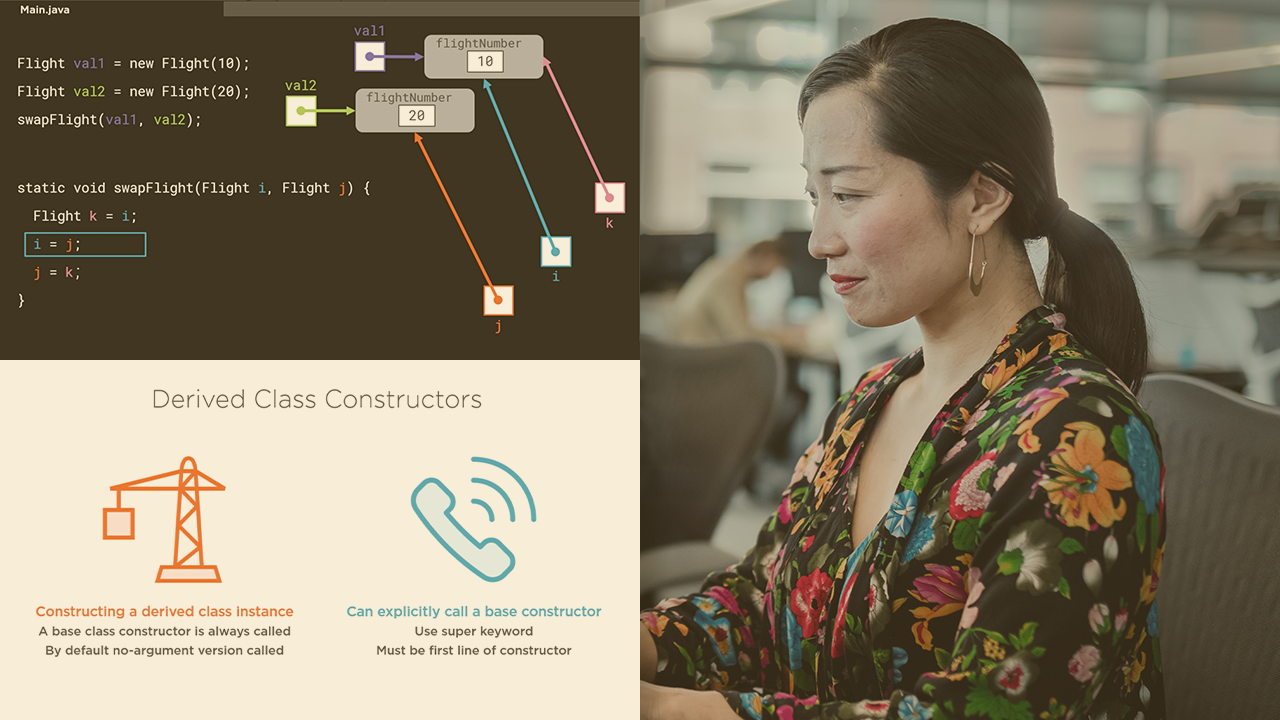- Course
Working with Classes and Interfaces in Java 11
This course provides you with everything you need to know to begin working with Java’s rich type system and serves as a strong foundation for all Java-based development environments including client-based, server-side, Android, and big data.

- Course
Working with Classes and Interfaces in Java 11
This course provides you with everything you need to know to begin working with Java’s rich type system and serves as a strong foundation for all Java-based development environments including client-based, server-side, Android, and big data.
Get started today
Access this course and other top-rated tech content with one of our business plans.
Try this course for free
Access this course and other top-rated tech content with one of our individual plans.
This course is included in the libraries shown below:
- Core Tech
What you'll learn
Java is one of the most popular and widely-used programming languages in the world. It is supported by billions of devices. Whether you are interested in client-based, server-side, Android, or big data development, understanding how to program in Java is a critical part of being successful. Java is a multiparadigm language with rich object-oriented features. In this course, Working with Classes and Interfaces in Java 11, you will learn to how to work effectively with the core of the Java type system: classes and interfaces. First, you will learn how to implement a class including class constructors, fields, getters/setters, and polymorphic methods. Next, you will explore class inheritance, method overloading, and abstract classes. Finally, you will discover how to work with Enums, interfaces, nested types, and anonymous classes. When you are finished with this course, you will have the foundational knowledge of working with classes and interfaces that will enable you to become a successful Java programmer.
Working with Classes and Interfaces in Java 11
-
Version Check | 15s
-
Introduction | 1m 5s
-
Declaring Classes | 3m 55s
-
Declaring the MathEquation Class | 5m 9s
-
Using Classes | 4m 38s
-
Creating an Array of Classes | 5m 11s
-
Using the MathEquation Class | 4m 7s
-
Encapsulation and Access Modifiers | 5m 7s
-
Special References: this and null | 4m 7s
-
Field Accessors and Mutators | 3m 28s
-
Summary | 3m 1s

